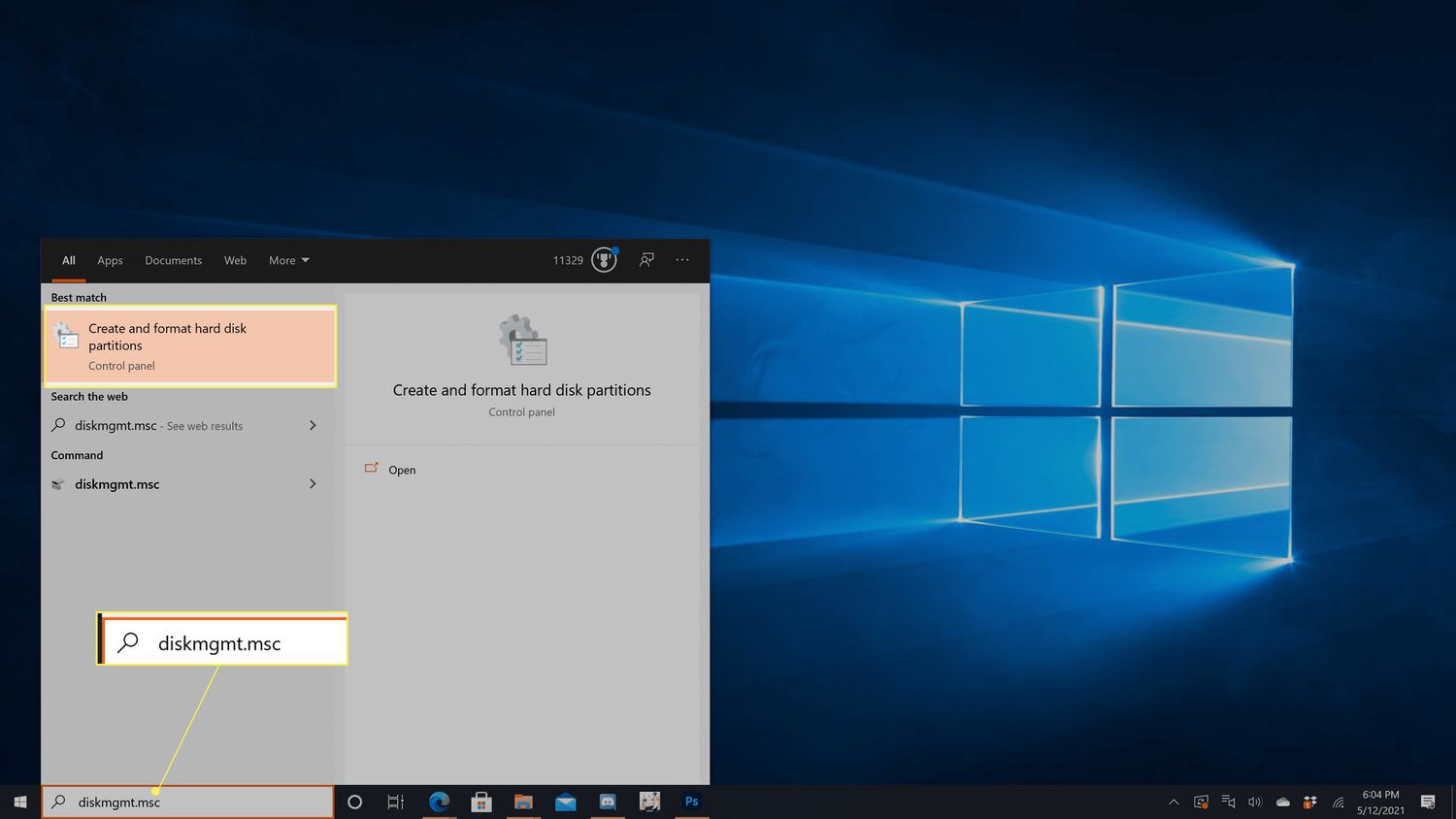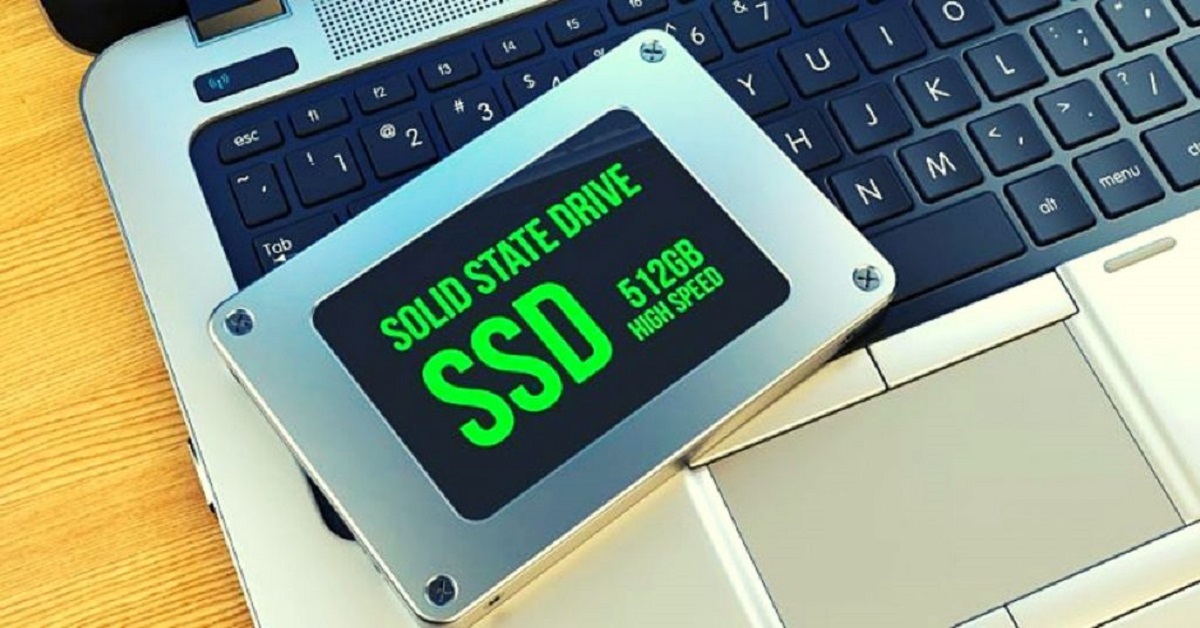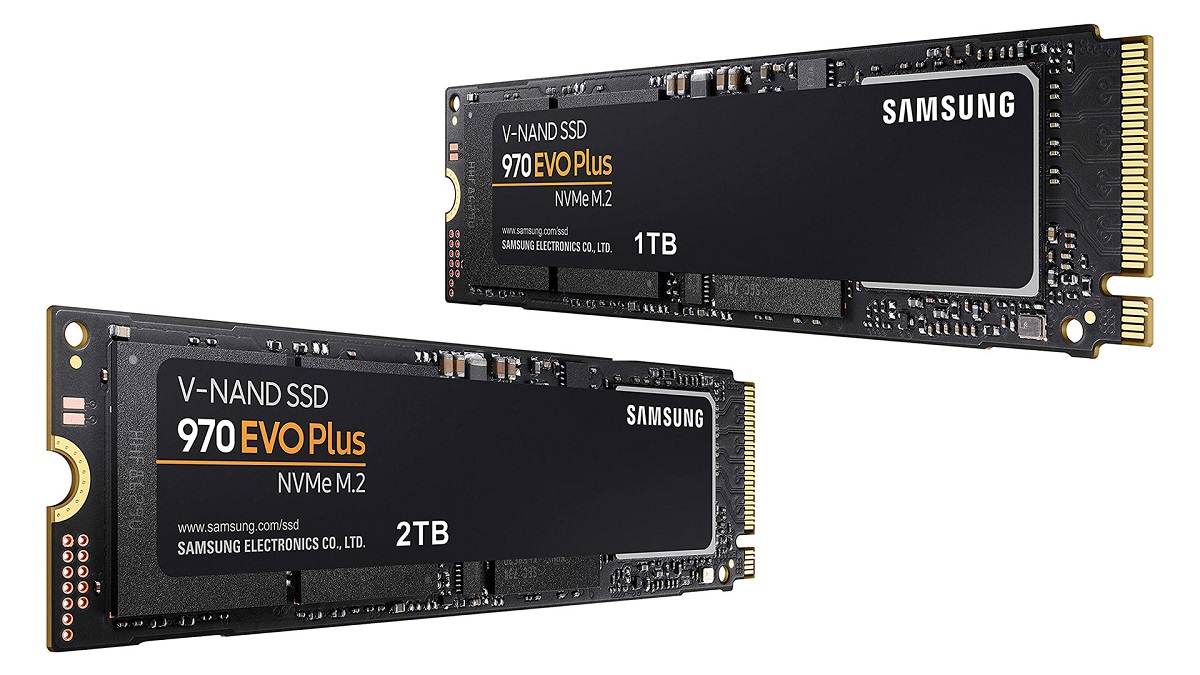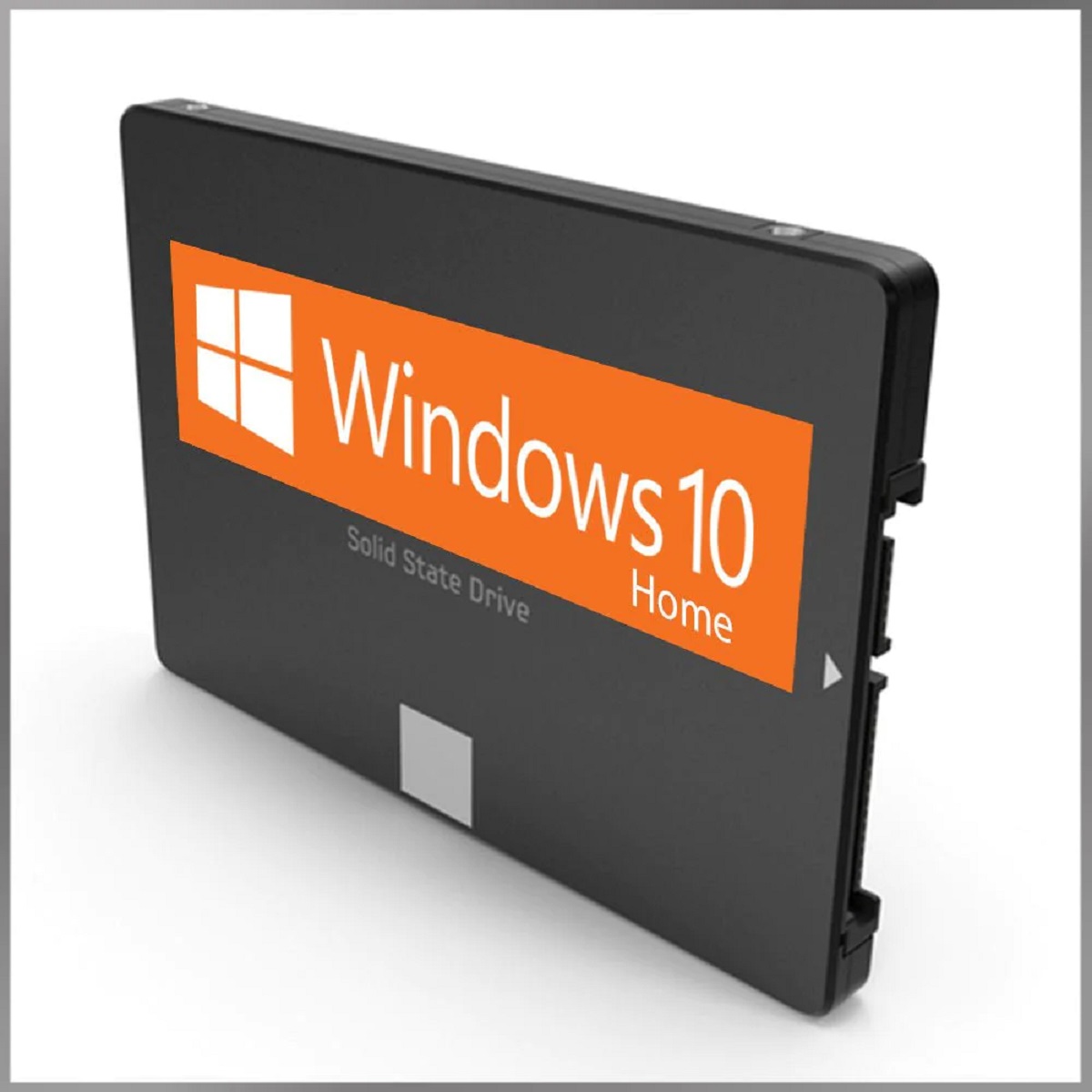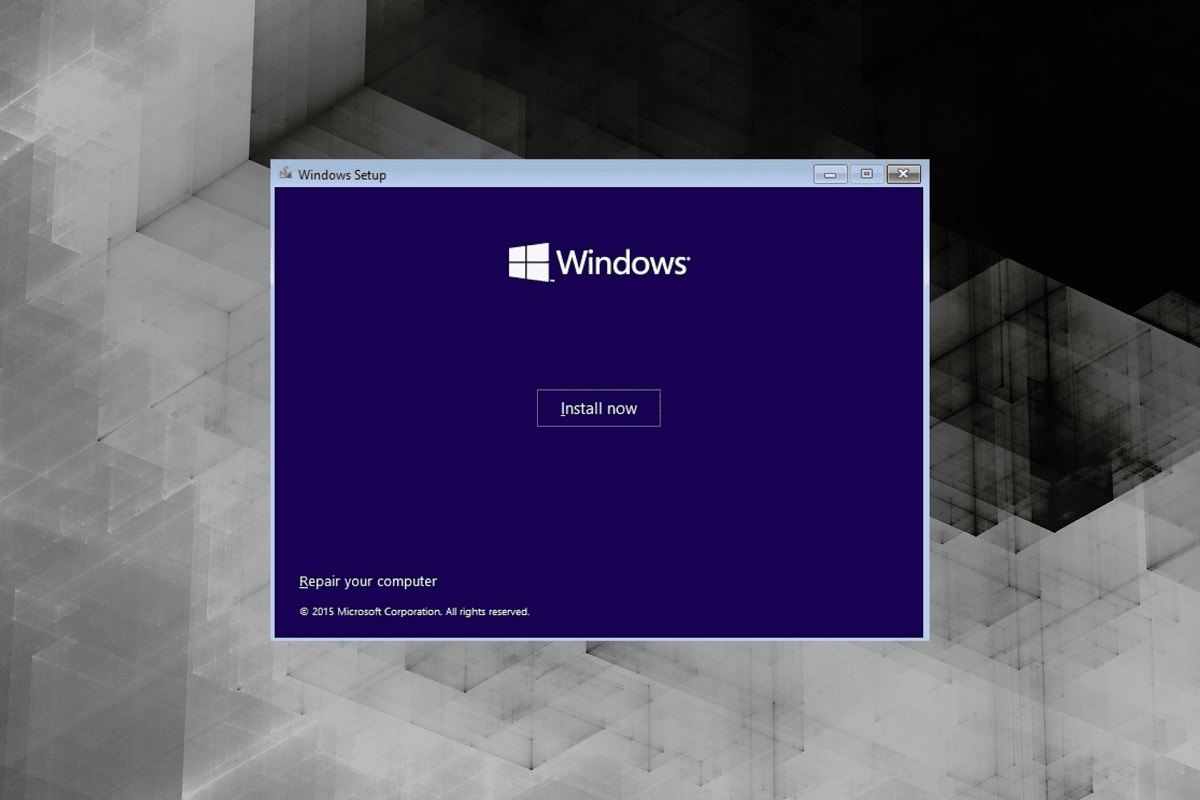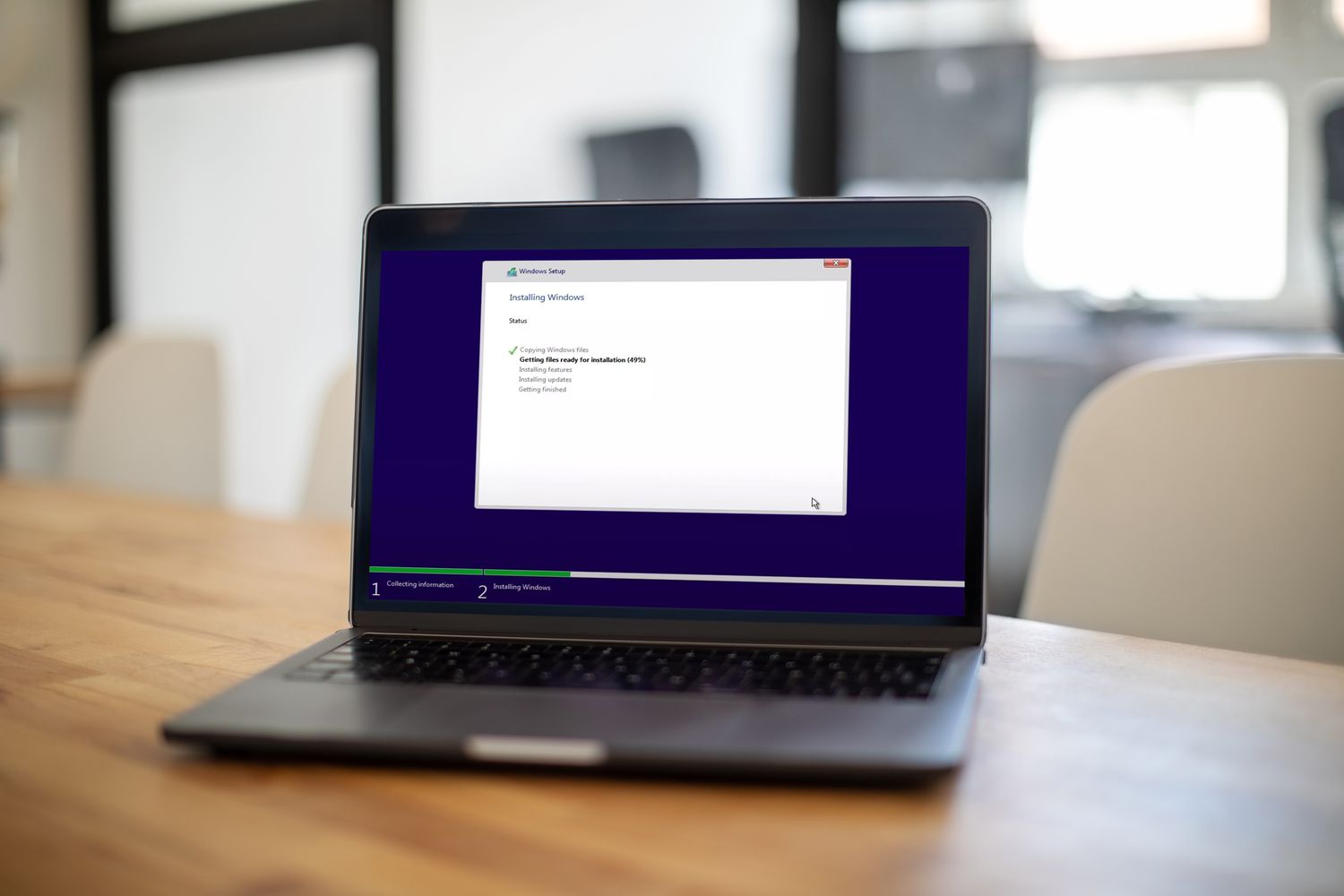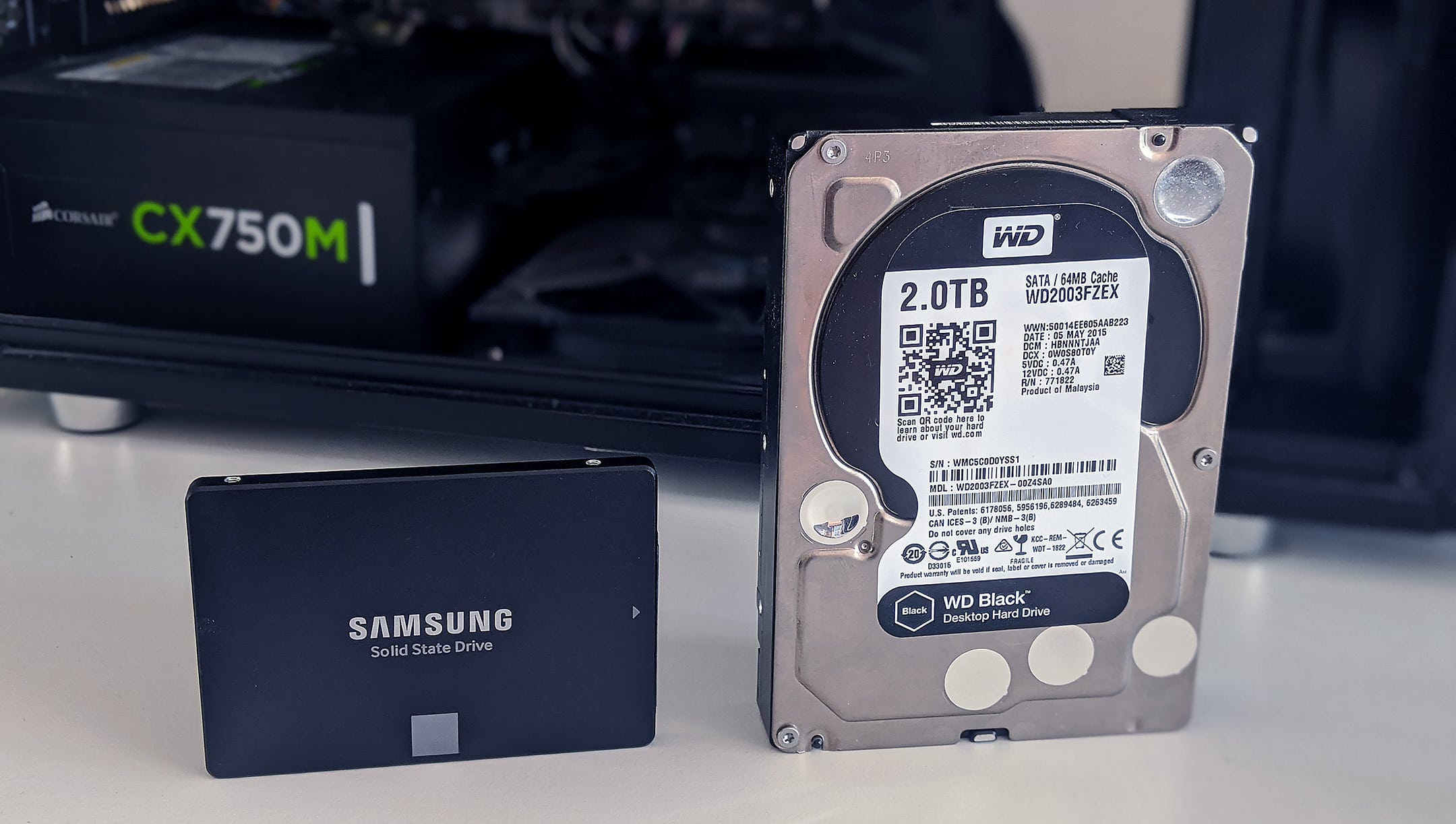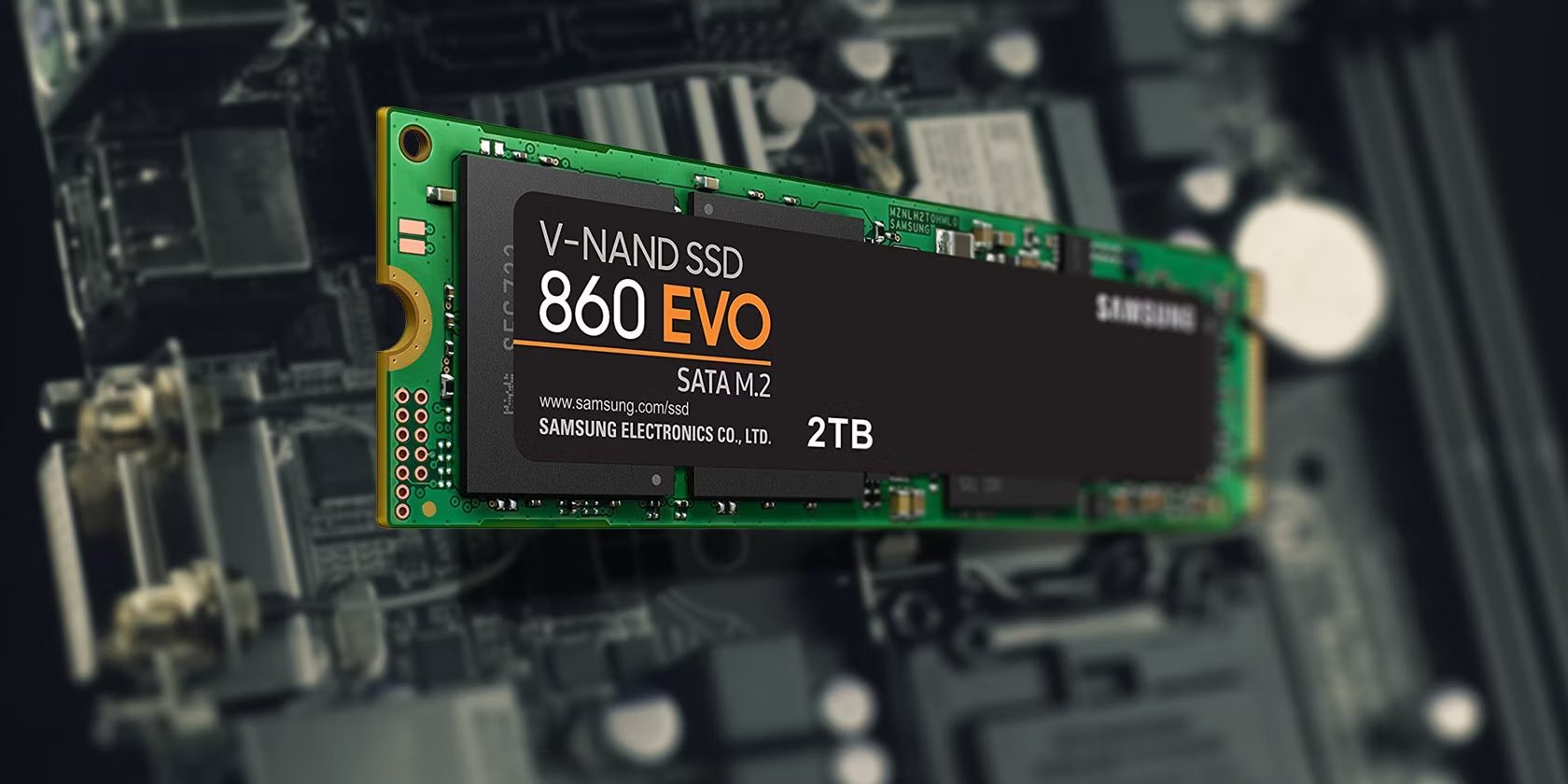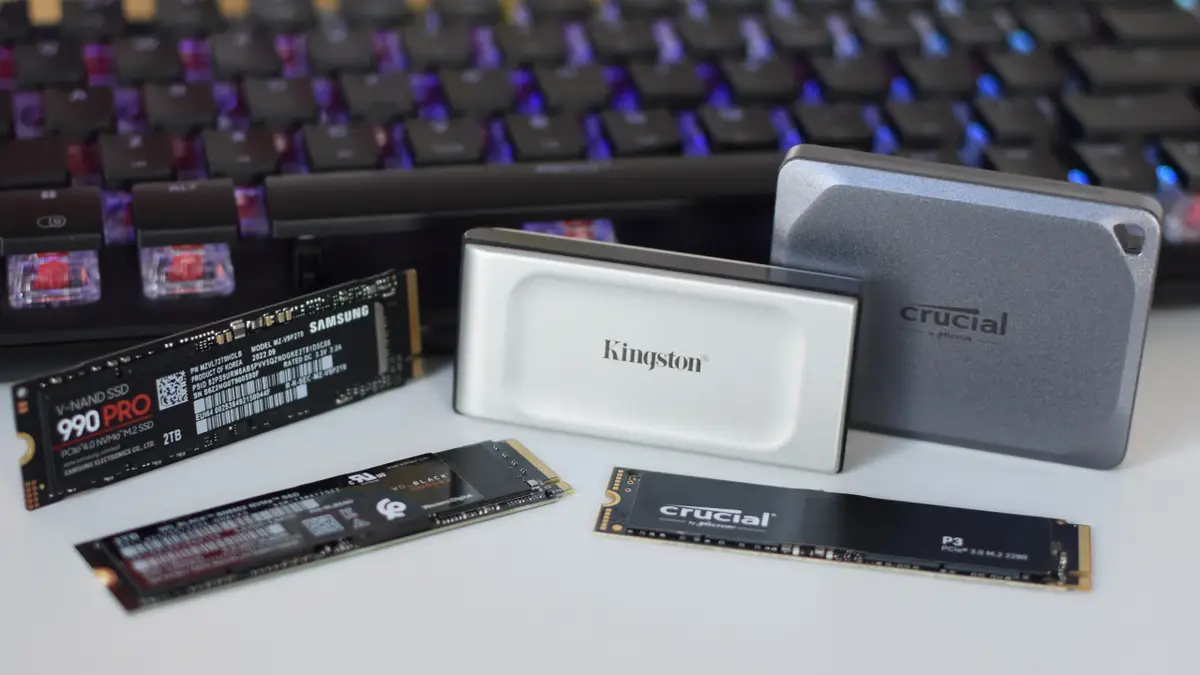Backup Your Data
Before you begin the process of setting up a new SSD in Windows 10, it is crucial to back up your data to ensure that you don’t lose any important files during the installation process. While the chances of data loss are minimal, it’s always better to be safe than sorry.
There are several methods you can use to back up your data. One of the easiest and most common ways is to use an external hard drive or cloud storage service.
If you choose to use an external hard drive, simply connect it to your computer and copy all of your important files and folders to the drive. Make sure to organize your data in a way that makes it easy to find and restore later on.
Alternatively, you can utilize a cloud storage service like Google Drive, Dropbox, or OneDrive. These services allow you to upload your files to the cloud, where they are safely stored and can be accessed from any device with an internet connection. Simply create an account, install the necessary software, and start uploading your files.
Once you have successfully backed up your data, take a moment to double-check that everything has been copied correctly and can be accessed. This step will provide peace of mind knowing that your files are safe and secure.
Backing up your data is an essential step before setting up a new SSD in Windows 10. By taking the time to safeguard your files, you can proceed with the installation process confidently, knowing that your important data is protected.
Check Compatibility and Capacity
Before diving into the installation process, it’s important to ensure that your new SSD is compatible with your system and has sufficient capacity to meet your needs. Here are a few steps to follow:
1. Check compatibility: Determine whether your system supports the type of SSD you have purchased. Verify if it uses a SATA or NVMe interface, as this will affect the compatibility. Consult your computer manufacturer’s website or user manual for information on the types of SSDs supported.
2. Check capacity: Assess your storage requirements and choose an SSD with sufficient capacity. Consider the type of files you frequently work with, such as multimedia or large data files, and factor in the required space for the operating system and applications. It’s recommended to choose an SSD with a capacity that surpasses your current needs to accommodate future growth.
3. Consider form factor: Ensure that the physical size of the SSD matches the available slots in your computer. Common form factors for SSDs include 2.5-inch and M.2, with the latter being more prevalent in newer systems. Check your motherboard or consult the manufacturer’s documentation to determine the compatible form factors.
4. Verify power requirements: Some high-performance SSDs may require additional power compared to standard ones. Confirm that your system’s power supply can provide adequate power to support the new SSD. You can consult the manufacturer’s specifications or refer to your power supply unit’s documentation for this information.
By following these steps, you can ensure that your new SSD is compatible with your system and will meet your storage needs. It’s essential to check these factors beforehand to prevent any compatibility or capacity issues during the installation process.
Physically Install the SSD
Now that you have confirmed the compatibility and capacity of your new SSD, it’s time to physically install it into your computer. Follow these steps to ensure a successful installation:
1. Power off your computer: Before working with any internal components, make sure to shut down your computer and disconnect the power cord. This will help prevent any accidental damage to your system or yourself.
2. Open your computer case: Depending on your computer model, you may need to remove a side panel, top cover, or access door to gain access to the internal components. Refer to your computer’s user manual or look for online resources specific to your model for guidance.
3. Locate the storage drive slots: Identify the existing storage drive slots in your computer. In most cases, they are located near the bottom front of the case and may be held in place by screws or brackets. If necessary, refer to your computer’s documentation to determine the exact location.
4. Mount the SSD: If you have an available 2.5-inch drive slot, secure the SSD in place using the provided mounting brackets or screws. If you are installing an M.2 SSD, locate the corresponding M.2 slot on the motherboard and gently insert the SSD at a slight angle to make a solid connection.
5. Connect the cables: For a 2.5-inch SSD, connect one end of a SATA data cable to the SSD and the other end to an available SATA port on the motherboard. Additionally, connect a SATA power cable from the power supply to the SSD. If you are installing an M.2 SSD, skip this step as it does not require any additional cables.
6. Secure the SSD and close the case: Double-check that all connections are secure and properly aligned. If necessary, use cable ties or clips to tidy up any loose cables. Finally, carefully close the computer case, reattach any removed panels or covers, and fasten them securely.
With the SSD physically installed in your computer, you’re now ready to move on to the next steps of setting it up and configuring your system to recognize the new drive.
Prepare for Installation
Before you can install Windows 10 on your new SSD, it’s important to take a few preparatory steps to ensure a smooth installation process. Here’s what you need to do:
1. Gather necessary tools and resources: Make sure you have all the tools you will need for the installation, including a USB drive with at least 8GB of storage capacity and a functioning computer with an internet connection. You will also need your Windows 10 installation media or ISO file.
2. Back up your settings and preferences: Take note of your current Windows settings, including desktop customization, browser bookmarks, and application preferences. This will help you in setting up your new Windows installation to match your previous configuration.
3. Download latest drivers and updates: Visit the manufacturer’s website of your computer or motherboard to download the latest drivers, especially the chipset and storage drivers, as these will ensure optimal performance and compatibility with your new SSD.
4. Disconnect unnecessary peripherals: For a smooth installation process, it’s best to disconnect any unnecessary peripherals such as printers, external hard drives, and USB devices. This streamlines the installation process and reduces the chances of any interference.
5. Set boot order: Access your computer’s BIOS or UEFI firmware settings and set the boot order to prioritize the USB drive as the first boot option. This will allow your computer to automatically boot from the USB drive when you restart it.
6. Verify Internet connectivity: Ensure that you have a stable internet connection during the installation process. This will enable Windows to download any necessary updates during the installation or set up process.
By following these preparatory steps, you will be ready to proceed with the installation of Windows 10 on your new SSD. These steps will help ensure a successful and hassle-free installation process, allowing you to enjoy the benefits of your upgraded storage system.
Create a Bootable USB Drive
In order to install Windows 10 on your new SSD, you’ll need to create a bootable USB drive. Here’s a step-by-step guide to help you through the process:
1. Download the Windows 10 ISO: Visit the official Microsoft website and download the Windows 10 ISO file. Make sure to choose the appropriate version and edition that matches your license.
2. Format the USB drive: Insert your USB drive into your computer and make sure it is empty as all data on it will be deleted. Open File Explorer and right-click on the USB drive, then select “Format”. Choose the FAT32 file system and give it a name. Click “Start” to format the drive.
3. Use Windows USB/DVD Download Tool: Download and install the Windows USB/DVD Download Tool from the Microsoft website. Launch the tool and follow the on-screen instructions. Select the Windows 10 ISO file you downloaded in step 1 and choose the USB drive as the destination. The tool will create a bootable USB drive with the Windows 10 installation files.
4. Use Rufus (optional): If you prefer an alternative method, you can use a third-party tool like Rufus to create a bootable USB drive. Download and install Rufus, then launch the program. Select your USB drive from the “Device” dropdown menu, choose the Windows 10 ISO file as the “Boot Selection”, and leave all other settings as default. Click “Start” to begin the process.
5. Wait for the process to complete: Depending on the size of the ISO file and the speed of your USB drive, the process may take some time. Once it’s done, you will have a bootable USB drive ready for installation.
Creating a bootable USB drive is a crucial step in installing Windows 10 on your new SSD. It allows you to easily start the installation process and ensures a smooth transition to your upgraded storage system.
Change Boot Order and Install Windows 10
With your bootable USB drive ready, it’s time to change the boot order in your computer’s BIOS or UEFI firmware settings and proceed with the installation of Windows 10 on your new SSD. Follow these steps:
1. Insert the bootable USB drive: Plug the bootable USB drive into an available USB port on your computer.
2. Access the BIOS or UEFI settings: Restart your computer and press the key (typically F2, Del, or F12) to access the BIOS or UEFI firmware settings. The key to press may vary depending on your computer make and model, so consult your computer’s manual or look for on-screen prompts during startup.
3. Change the boot order: Navigate to the “Boot” or “Boot Order” section in the BIOS or UEFI settings. Modify the boot order to prioritize the USB drive as the first boot option. Save the changes and exit the BIOS or UEFI settings.
4. Restart your computer: The computer will now restart, and it should boot from the USB drive. This will initiate the Windows 10 installation process.
5. Follow the Windows 10 installation wizard: Once the computer boots from the USB drive, the Windows 10 installation wizard will appear. Follow the on-screen prompts to select the language, region, and keyboard layout. Click “Next” to proceed.
6. Enter your product key: If prompted, enter the product key for your Windows 10 license. This step may vary depending on your installation media or licensing agreement.
7. Select the SSD and begin installation: On the “Where do you want to install Windows?” screen, select your new SSD as the destination. Click “Next” to begin the installation process. Windows will format the SSD and copy the necessary installation files.
8. Complete the installation: Follow the remaining prompts to configure your privacy settings, create or sign in with a Microsoft account, and personalize your Windows 10 settings. Once everything is set up, Windows 10 will be installed on your new SSD.
Changing the boot order and installing Windows 10 on your new SSD is a crucial step in the process. By following these steps, you will successfully configure your computer to boot from the USB drive and initiate the installation of Windows 10 on your new SSD.
Initialize and Format the SSD
After the installation of Windows 10 on your new SSD, the next step is to initialize and format the SSD to make it usable for storing your files and applications. Here’s how to do it:
1. Open Disk Management: Right-click on the Start button and select “Disk Management” from the context menu. This will open the Disk Management utility.
2. Locate the SSD: In the Disk Management window, you will see a list of all connected drives. Locate your new SSD, which should be labeled as “Unallocated” or “Raw”.
3. Initialize the SSD: Right-click on the SSD and select “Initialize Disk”. Leave the default disk initialization option (usually “MBR” for most systems) selected and click “OK” to initialize the SSD.
4. Create a new partition: Right-click on the “Unallocated” space of the SSD and select “New Simple Volume”. Follow the on-screen instructions in the New Simple Volume Wizard to create a new partition. Choose the desired size for the partition and assign a drive letter to it.
5. Format the partition: Select the newly created partition, right-click on it, and choose “Format”. In the Format window, choose the file system (typically NTFS) and optionally provide a volume label. Ensure that the “Quick Format” option is selected for faster formatting and click “OK” to start the formatting process.
6. Wait for the formatting to complete: The formatting process may take some time, depending on the size of the partition. Once it’s complete, the SSD will be ready for use.
7. Verify the SSD is accessible: Open File Explorer and check if the newly formatted partition is visible and accessible. If so, you have successfully initialized and formatted your SSD.
By following these steps to initialize and format your SSD, you will ensure that it is properly set up and ready for storing your files and applications. This process allows your SSD to be recognized and utilized by your Windows 10 system.
Install Necessary Drivers
After initializing and formatting your new SSD, it’s important to install the necessary drivers to optimize performance and ensure compatibility with your hardware. Here’s how to install the drivers:
1. Identify your hardware: Before proceeding, identify the specific hardware components in your system that require drivers. This includes the chipset, graphics card, network adapter, and any other peripherals that require drivers for proper functionality.
2. Visit the manufacturer’s website: Go to the website of each hardware component’s manufacturer to download the latest drivers. Look for a “Support” or “Downloads” section on their website and search for your specific model or product.
3. Download the drivers: Locate the drivers for your specific hardware and download them to a location on your computer where you can easily access them.
4. Install the drivers: Double-click on each driver file and follow the on-screen instructions to install them. Most drivers come in an executable format that will guide you through the installation process.
5. Restart your computer: Once you have installed all the necessary drivers, it’s important to restart your computer to apply the changes and ensure proper functioning of the hardware.
6. Verify driver installation: After restarting your computer, check the Device Manager for any unrecognized or problematic hardware. Open the Device Manager by right-clicking on the Start button and selecting “Device Manager” from the context menu. Look for any yellow exclamation marks or question marks next to devices, indicating driver issues.
If there are any devices with driver issues, right-click on the device and select “Update driver”. Choose the option to automatically search and install the latest driver from the internet or manually locate the driver file previously downloaded.
By installing the necessary drivers, you will ensure that your hardware components function optimally with your newly installed SSD. This step is crucial for achieving maximum performance and compatibility in your Windows 10 system.
Transfer Data from Old Drive (Optional)
If you have an existing drive with data on it that you want to transfer to your new SSD, you have the option to migrate or copy the data to ensure a seamless transition. Follow these steps to transfer your data:
1. Backup your data: Before you begin the data transfer process, it’s always a good idea to back up your important files to an external drive or cloud storage service. This ensures that your data is safe in case anything goes wrong during the transfer.
2. Choose a data transfer method: There are several ways to transfer data from your old drive to the new SSD. You can use built-in Windows utilities like File Explorer, backup and restore tools, or third-party software designed specifically for data migration.
3. Using File Explorer: Open File Explorer and navigate to your old drive. Select the files and folders you want to transfer, right-click, and choose “Copy”. Then, navigate to your new SSD, right-click in the desired location, and choose “Paste”. This method can be time-consuming if you have a large amount of data.
4. Backup and restore tools: Windows provides built-in backup and restore tools that allow you to create a system image or backup of your old drive, and then restore it onto your new SSD. You can access these tools by searching for “Backup and Restore” in the Start menu.
5. Third-party software: Alternatively, you can use third-party software like EaseUS Todo Backup, Macrium Reflect, or Acronis True Image to simplify the data transfer process. These tools offer more advanced features and faster transfer speeds.
6. Verify the data transfer: Once the data transfer process is complete, verify that all your files and folders have been successfully transferred to your new SSD. Open them and ensure they are accessible and intact.
Remember, data transfer is an optional step, but it can save you a lot of time and effort in setting up your new system on the SSD. It allows you to seamlessly continue using your files and applications without the need for manual reinstallation or configuration.
Optimize and Configure the SSD
After installing and transferring your data to the new SSD, it’s essential to optimize and configure it for optimal performance. Here are some steps you can take to ensure your SSD is set up correctly:
1. Enable AHCI mode: Open the BIOS/UEFI settings and check if your SSD is running in AHCI (Advanced Host Controller Interface) mode. This mode enables advanced features and performance optimization specifically designed for SSDs. If it’s not already enabled, consult your motherboard’s manual or manufacturer’s website for instructions on how to enable AHCI mode.
2. Disable disk defragmentation: SSDs don’t benefit from traditional disk defragmentation as it can cause unnecessary wear and tear on the drive. Windows 10 automatically detects SSDs and disables defragmentation, but it’s a good idea to double-check this setting. Open the “Defragment and Optimize Drives” utility in Windows and ensure that your SSD is labeled as “Solid-state Drive”.
3. Check TRIM function: TRIM is a function that helps optimize the performance of SSDs by allowing the drive’s controller to efficiently manage the storage of data. Windows 10 should have TRIM enabled by default, but you can manually verify and enable it if needed. Open the Command Prompt as an administrator and type the command “fsutil behavior query DisableDeleteNotify”. If the result is “DisableDeleteNotify = 0”, TRIM is already enabled.
4. Adjust power settings: SSDs don’t require the same power management settings as traditional hard drives. To optimize the performance of your SSD, open the Power Options in the Control Panel, select a power plan, and configure the Advanced Power Settings. Look for settings related to hard disk power off, sleep mode, and hibernation, and set them appropriately to avoid unnecessary power management actions that may impact performance.
5. Enable write caching: SSDs have their own built-in write caching mechanism, so disabling Windows write caching for your SSD can improve performance. Open the Device Manager, expand the Disk drives category, right-click on your SSD, select Properties, go to the Policies tab, and ensure that “Enable write caching on the device” is checked.
By following these steps to optimize and configure your SSD, you will ensure that it operates at its maximum potential and provides you with the best performance and longevity. Take the time to fine-tune these settings, and you will experience the full benefits of your new SSD.
Enable TRIM and Disable Hibernation
To further optimize the performance and lifespan of your SSD, it’s important to enable TRIM and disable hibernation. Here’s how you can do it:
1. Enable TRIM:
TRIM is a feature that helps maintain the performance of your SSD by allowing the operating system to inform the drive which blocks of data are no longer in use. To enable TRIM:
– Open the Command Prompt as an administrator by right-clicking on the Start button and selecting “Command Prompt (Admin)”.
– Type the command “fsutil behavior set DisableDeleteNotify 0” and press Enter.
– This will enable TRIM on your SSD, allowing it to efficiently manage and optimize its storage.
2. Disable Hibernation:
By disabling hibernation, you can free up valuable disk space on your SSD and prevent unnecessary write operations. Here’s how to disable hibernation:
– Open the Command Prompt as an administrator.
– Type the command “powercfg.exe /hibernate off” and press Enter.
– This will disable hibernation and remove the hiberfil.sys file from your SSD, recovering disk space.
Note: Disabling hibernation will remove the option to hibernate your system, but it will not affect sleep mode or the ability to shut down or restart your computer.
3. Verify TRIM and hibernation settings:
– To verify that TRIM is enabled, open the Command Prompt and type the command “fsutil behavior query DisableDeleteNotify”. Ensure that the result is “DisableDeleteNotify = 0”.
– To verify that hibernation is disabled, open the Command Prompt and type the command “powercfg.exe /a”. Look for a line that says “Hibernation capabilities: Off”. This confirms that hibernation is disabled.
By enabling TRIM and disabling hibernation, you can ensure that your SSD functions optimally and remains in good health throughout its lifespan. These steps will help you maximize the performance and longevity of your SSD.
Update Windows and Drivers
After setting up your new SSD, it’s crucial to keep your Windows operating system and device drivers up to date. Regular updates provide important security patches, bug fixes, and performance enhancements. Here’s how to update Windows and drivers:
1. Update Windows:
– Click on the Start button and select “Settings” (the gear icon).
– In the Settings window, click on “Update & Security”.
– It will open the Windows Update settings. Click on “Check for updates”.
– Windows will scan for available updates and download/install them automatically. Restart your computer if prompted to complete the installation.
2. Update device drivers:
– Visit your computer or device manufacturer’s website to download the latest drivers for your specific model. Look for a “Support” or “Downloads” section on their website.
– Navigate to the driver download section and locate the appropriate drivers for your hardware components, such as the chipset, graphics card, network adapter, and audio.
– Follow the manufacturer’s instructions to download and install the drivers. It’s recommended to start with critical components like chipset and graphics drivers.
– Restart your computer after installing each driver to ensure proper functionality and configuration.
3. Automatic driver update:
– Windows 10 has a feature that automatically updates device drivers. To enable it:
– In the Windows Update settings (Step 1), click on “Advanced options”.
– Under the “Optional updates”, select “Automatically download drivers for my devices, unless it is prevented from downloading them” option.
– This will allow Windows to automatically search and install available driver updates for your hardware components.
Keeping your Windows operating system and drivers up to date is essential for overall system stability, security, and performance. By regularly updating Windows and device drivers, you can ensure that your system functions optimally with your new SSD, providing a smooth and reliable user experience.
Enjoy Your New SSD
Congratulations on successfully setting up your new SSD in Windows 10! With the enhanced speed and performance of your SSD, you can now enjoy a smoother and more efficient computing experience. Here are a few final tips to maximize your enjoyment:
1. Organize your files: Take advantage of the improved speed and responsiveness of your SSD by organizing your files and folders. Create a logical folder structure and keep your files neatly organized. This will make it easier to find and access your files, enhancing your productivity.
2. Install frequently used applications: Install your frequently used applications on the SSD to take advantage of faster loading times. This includes productivity tools, web browsers, and any software you use regularly. Loading times will be significantly reduced, saving you valuable time and improving overall workflow.
3. Regularly back up your data: Although SSDs are more reliable than traditional hard drives, it’s still important to regularly back up your data. Invest in an external hard drive or utilize cloud storage to create a backup of your important files. This ensures that your data is safe in case of any unforeseen issues or SSD failure.
4. Maintain your SSD: To keep your SSD in optimal condition, periodically perform maintenance tasks. This includes updating firmware when available, cleaning up temporary files, and running disk cleanup and optimization utilities provided by the operating system.
5. Enjoy faster boot times and system responsiveness: One of the significant benefits of using an SSD is the faster boot times. Enjoy the quick startup and shutdown of your computer, along with improved system responsiveness for everyday tasks. Your computer will feel snappier and more enjoyable to use.
6. Take advantage of gaming performance: If you’re a gamer, you’ll notice significant improvements in game loading times and levels. Install your favorite games on the SSD to experience faster load times, shorter waiting periods, and smoother gameplay without pauses or stutters.
By following these tips, you can fully optimize and enjoy the benefits of your new SSD. The increased speed and performance will enhance your computing experience, making everyday tasks more efficient and enjoyable. Embrace the power of your new SSD and unleash the full potential of your Windows 10 system!







